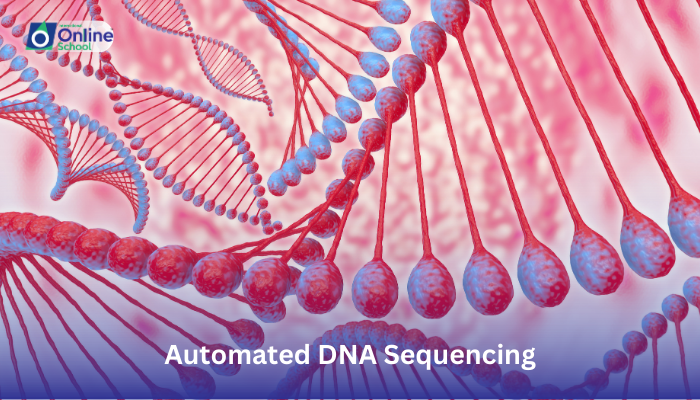
Learning Outcomes:
i. Explain the principle of automated DNA sequencing based on the Sanger-Coulson method.
ii. Describe the key steps involved in automated DNA sequencing, highlighting the advantages it offers over manual methods.
iii. Appreciate the impact of automation on the efficiency, accuracy, and accessibility of DNA sequencing.
Introduction:
Imagine deciphering a secret message letter by letter, a slow and painstaking process. Automated DNA sequencing is like a high-speed translator, rapidly decoding the genetic code with remarkable accuracy and efficiency. Today, we embark on a journey into the world of this revolutionary technology, based on the pioneering Sanger-Coulson method, and explore how it has transformed our understanding of the blueprint of life.
i. The Automation Revolution: From Manual to Machine:
While the basic principle of identifying DNA bases through fluorescently labeled nucleotides remains the same as in the Sanger-Coulson method, automation significantly streamlines the process:
Sample preparation: Automated robots handle DNA extraction, purification, and PCR amplification, eliminating manual steps and reducing errors.
Sequencing reactions: DNA samples are loaded into specialized capillaries or microfluidic chips, allowing for parallel sequencing of multiple samples simultaneously.
Detection and analysis: Fluorescence detectors capture the color signals emitted by the labeled nucleotides, and powerful software automatically analyzes the data, generating accurate sequence reads.
ii. Speeding Up the Code Cracking Process:
Automation offers several advantages over manual methods:
Increased throughput: Thousands of DNA fragments can be sequenced in a single run, significantly reducing the time required for large-scale projects.
Enhanced accuracy: Automated pipetting and controlled reaction conditions minimize human error and ensure consistent results.
Improved data quality: Automated data analysis removes subjectivity and provides accurate base calling and sequence assembly.
iii. Unlocking the Secrets of Life: The Impact of Automation:
Automation has revolutionized DNA sequencing, impacting various fields:
Genome research: Large-scale studies of genomes, including mapping, variation analysis, and functional characterization, have become feasible and routine.
Personalized medicine: Sequencing individual genomes allows for tailored medical interventions and diagnoses based on genetic predispositions.
Disease research: Identifying genetic mutations associated with diseases has accelerated the development of targeted therapies and diagnostics.
Forensics: DNA evidence analysis has become more efficient and accurate, aiding in criminal investigations and identification.
Automated DNA sequencing, building upon the foundation of the Sanger-Coulson method, has transformed the landscape of genetic research and its applications. By combining speed, accuracy, and accessibility, this technology has opened doors to unlocking the secrets of life at an unprecedented pace. As we continue to refine and develop even more efficient sequencing technologies, the possibilities for understanding and manipulating the genetic code hold immense potential for shaping a future where personalized medicine, precision healthcare, and advancements in various fields become a reality.